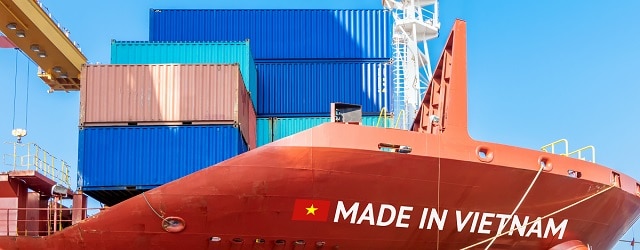Smaller economies in the region are successfully positioning themselves as a manufacturing alternative to China.

Asia’s emerging economies appear to be gaining the most from the US-China trade war. Some of the more nimble economies of ASEAN (the Association of SouthEast Asian Nations) have been laying the groundwork to benefit from the realignment of global supply chains caused by the trade war, experts say, particularly Vietnam, Thailand and Malaysia. The combination of a predictable regulatory environment, developed transport infrastructure and the ability to ramp up public spending leaves these three positioned to receive the wave of investment they expect the trade war to bring their way.
The trade war will make ASEAN a key driver of global economic growth, says Siwage Dharma Negara, senior fellow and coordinator of the APEC Study Centre at ISEAS-Yusof Ishak Institute in Singapore.
A poll of over 800 business leaders at the Refinitiv ASEAN Regulatory Summit in Singapore last year found that trade tensions between the US and China will have the greatest influence on ASEAN businesses in the next two years. As ASEAN picks up trade with the US, its trade with China continues to be strong.
China Plus One
The combination of Beijing’s tariff war with the US and the unexpected impact of the COVID-19 pandemic has fundamentally altered the risk perception of China, says Tommy Wu, lead economist at Oxford Economics in Hong Kong. “We are seeing a move to a ‘China Plus One’ policy,” he says, “where companies will avoid too much reliance on China in future, splitting supply to mitigate the risk of disruption.”
While the trade war fueled growing Southeast Asian economies, only those that laid the right groundwork can take advantage of the opportunity it presents, however. “It is not just about low-end manufacturing, clearly,” Wu says. “Taiwanese companies have moved production back to Taiwan; it is close to China, has a developed infrastructure and presents a lower disruption risk because it remains close to the US politically.”
Depth and quality of infrastructure determine which countries benefit the most, says Michael Taylor, chief credit officer for Asia at Moody’s in Singapore. He adds that Vietnam, Thailand and Malaysia have already made major infrastructure investments.
In June, when Nomura ranked countries that would benefit most from the US and China’s diversion of imports as a consequence of tariffs, Vietnam came out on top with an eye-watering 7.1% gain in GDP. Other significant winners included Taiwan, 2.1%, and Thailand, 1.5%.
Perhaps more than any other economy, Vietnam, which expanded 7% last year, has raced to position itself as a sanctuary for manufacturers looking to lower costs and escape tensions. In January, Prime Minister Nguyen Xuan Phuc said his country was ready to “grab the opportunity” presented by the ongoing Washington/Beijing spat. “Beyond the near term, Vietnam will likely be the main beneficiary of a supply chain shift,” Wu says, “given its close proximity to China, low wages and favorable trade and foreign direct investment policies.”
While India’s plentiful supply of low-cost labor seems to make it a good candidate to benefit, Wu says a misaligned government policy and uncertain regulatory regime limit its attractiveness to manufacturers.
Global Slowdown
Overhanging all of the jockeying around trade is the continuing downtrend in exports worldwide, which appears likely to continue with the advent of the novel coronoavirus.
“Last year, there was quite a slowdown in trade globally, not just in Asia,” says Wu. “To make matters worse, the global electronics cycle was on a downswing. Even before COVID-19, we were expecting a soft 2020.” Last month, the Asian Development Bank forecast regional growth would slow to 5.7% this year, down from 5.9% in 2019, citing the trade tensions as the biggest risk factor.
“A key question is the extent to which we retain the rules-based trading regime that we became accustomed to over the last 30 years, which was extremely good for economies in Asia,” says Taylor. “The world is more integrated today than in the 1970s, and the damage could therefore be much greater.”



